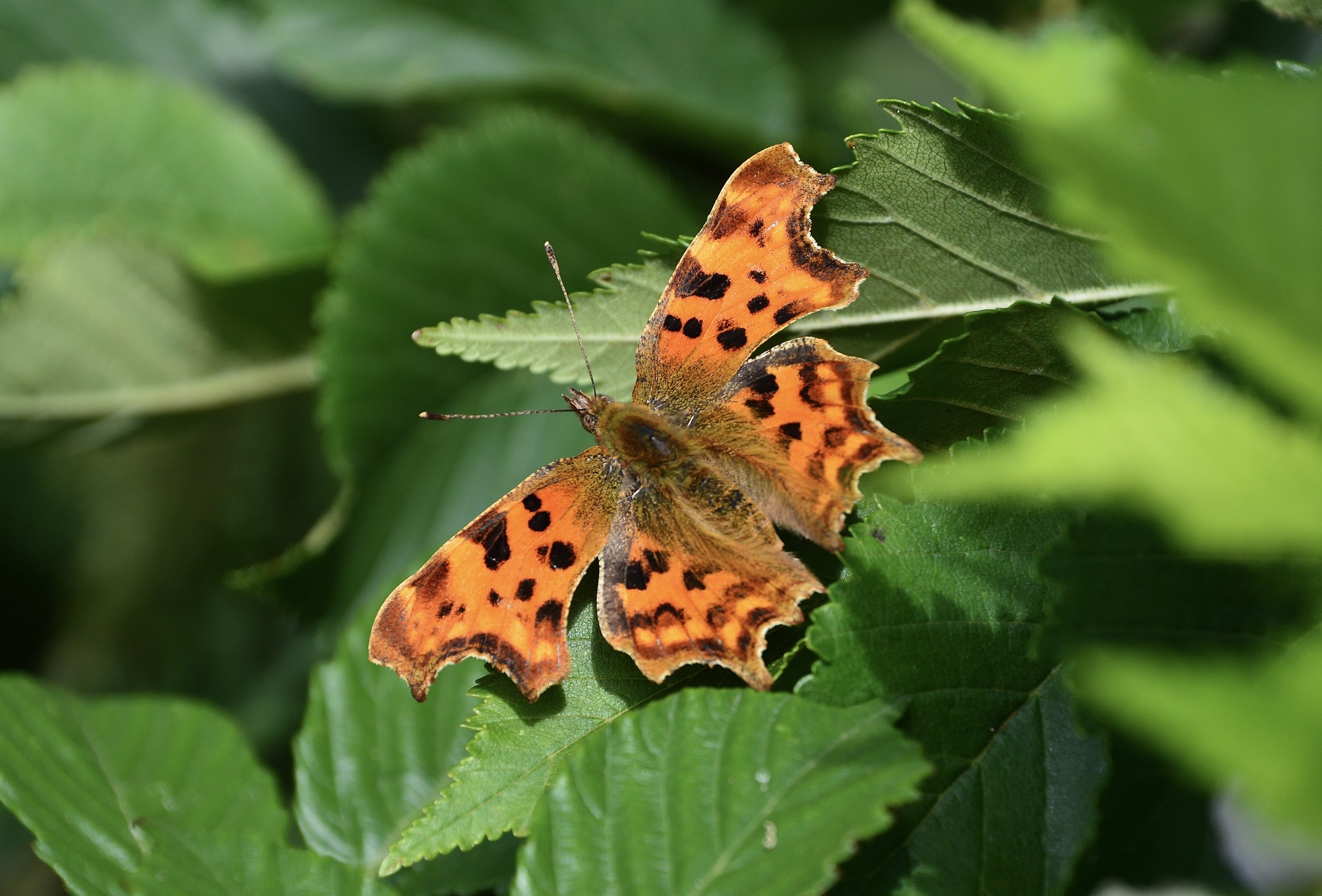
Woodland Butterflies
Speckled Wood
Typically, 3 generations a year
Eggs laid on grass leaves
Overwinters as either larvae or pupa. If larva will resume feeding if warm
To find a mate, males with:
Paler wing colour perch in territories
Dark wing colour patrol through the habitat (maybe they warm up quicker when basking)
Second half of 19th C and early 20th C, there was a massive range contraction. Since then, population has increased:
Benefitted from lack of woodland management – resulting in increased shade
Adults generally feed on honeydew in treetops.
Comma
Severe decline in numbers in 20th C. Now recovering.
Increase attributed to:
Switch to nettles as larval foodplant (formerly relying more on hops).
Climate change
Dutch elm disease – gives more shrubby elm growth that is better as a foodplant than mature tree
Mainly woodland but will move about in search of nectar and rotting fruit.
Purple Hairstreak
Larvae burrows into oak flower bud; second and subsequent instars live externally in spun web
Pupa on ground (maybe tended in an ant nest) or in crevice on oak branch
Adult most active in afternoon and evenings – has occurred in moth traps
Colonies can be self-contained on same oak tree for many years
Rarely stray from home tree – do not readily colonise new habitat unless very close
Presence of ants nest may be critical.
Silver-washed fritillary
Affected by changes in woodland management
In hot summers individuals occur considerable distances from known breeding areas.
